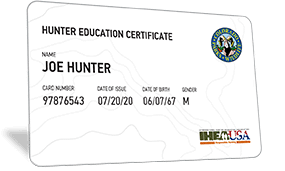
AGE REQUIREMENTS FOR COLORADO HUNTERS
Every hunter in Colorado, who was born on or after January 1st, 1949 is required to complete Hunter Education Certification. There is no minimum agee to get certified.

COLORADO HUNTING EDUCATION REQUIREMENTS
WHAT IS A COLORADO HUNTER EDUCATION CERTIFICATE
A Colorado Hunter Education Certificate proves that you’ve obtained the knowledge needed to hunt safely, responsibly, and ethically, within the state of Colorado. All hunters in Colorado who were born on or after January 1st, 1949 are required to get certified.
WHERE CAN I GET MY COLORADO HUNTER EDUCATION CERTIFICATE?
You can obtain your Colorado Hunter Education Card by completing a Colorado Parks and Wildlife-approved course. Courses can be taken either in-person or by completing a combination online + conclusion course, depending on your preference.
In-Person Course Option
Instructor-led classroom courses are available in counties across the state and take a minimum of 10 hours to complete. In-person courses may take place in a single session or over multiple days. Upon completing the classroom course, live-fire exercise, and final test, students will be issued their hunter education certificate.
Online Course + Conclusion Course:
Hunters can obtain their Hunter Education Course by completing a combination course, which includes an online portion and in-person conclusion course. Upon completing the online portion, students will complete a shorter 4-6 hour classroom course and a live-fire exercise. Once all portions of the course have been completed, including the final exam, students will be issues their Hunter Education Certificate.
HOW OLD DO I HAVE TO BE TO GET A HUNTER EDUCATION CERTIFICATE IN COLORADO?
There is no minimum age to complete a hunter education course in Colorado, and obtain your Hunter Education Certificate.
YOUTH HUNTER OUTREACH PROGRAM
Colorado’s youth hunter outreach program offers young hunters the opportunity to learn about hunting and basic hunting skills and firearm safety in a safe and controlled environment. The program is led by trained staff and volunteers and includes clinics, seminars, and in-field hunts. The youth hunts offered through this program include small game, big game, waterfowl, and turkey hunts.
For more information on the Youth Hunter Outreach Program, visit the Colorado Parks and Wildlife website.
Is my Colorado Hunter Education Certificate valid in other states?
The Colorado Hunter Education Certificate will be accepted in any US state, province, or country which also requires mandatory hunter education, meaning hunters who have obtained their Colorado Hunter Education Certificate may use it to hunt in other states. This is known as “reciprocity”.
What's the difference between a Hunter Education Certificate and a Hunting License?
A Hunter Education Card proves that you’ve obtained the knowledge you need to hunt safely and ethically in Colorado, and is different from a Hunting License. The Hunting Licence is similar to a permit and is required to hunt any game animal within the state. Different licenses and permits may be required depending on which game animal is being hunted.
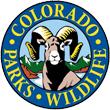
HUNTING LICENSES, STAMPS, AND PERMITS
HUNTING LICENSES
A Hunting License is required in the state of Colorado to hunt any game animal. There are a variety of license types available depending on your age, residency status, and what type of game you plan to hunt. Some of the hunting license types in Colorado include:
Big Game Licenses
There are a wide variety of big game license types available – these license types are available to both residents and non-residents. Big game licenses in Colorado are issued per-game species, and hunters must obtain the correct license for the species they plan to hunt. Big game license types available include deer, bear, elk, moose, bighorn sheep, pronghorn, mountain lion and turkey, among others.
Small Game Licenses
There are a variety of small game license types available, including single or multi-day license types, game animal-specific license types, furbearer licenses, and hunting-fishing combination licenses. The type of license needed will depend on the type of game being hunted. These license types are available to both residents and non-residents.
Apprentice Hunter Certificate
This license type is available to hunters who are 10 years of age or older and is a waiver that exempts the hunter from the state hunter education requirement for a period of one year. It can be obtained twice in the hunter’s life-time, and is valid from March 1st to March 31st of the following year. For more information on the Apprentice Hunter Certificate, and who is eligible to obtain one, visit the CPW Website.
COLORADO HUNTER CERTIFICATION AGE REQUIREMENTS

UNDER 12 YEARS OF AGE
Hunters who are less than 12 years of age are not permitted to hunt big game within the state of Colorado. However, they are permitted to hunt small game as long as they possess the required hunting license and meet the hunter education requirements. Youth who are hunting small game, who are less than 16 years of age, must also be accompanied by a mentor. The mentor must be 18 years of age or older, and meet the hunter education requirements.

12-17 Years of Age
Hunters who are 12-17 years of age are permitted to hunt big game and small game, as long as they are supervised by a mentor and have obtained hunter education certification. The mentor must be 18 years of age or older and meet the hunter education requirements.

Colorado's Hunting Fines

Hunting License Violations
Up to $250

Illegal possession of big game
Up to $1,000

Possession of endangered species
Up to $100,000

Hunting in a careless manner
Up to $1,000

Hunting under the influence
Up to $1,000
COLORADO HUNTING FAQS
DO I NEED A HUNTING LICENSE TO HUNT WITHIN THE STATE OF COLORADO?
Yes. A Hunting License is different from a Hunter Education Certificate and is required for any person who hunts any game animal within the state. This includes both residents and non-residents. Varying licenses must be purchased and carried depending on the hunter’s age, residency, and the type of game being hunted. Certain exceptions may apply depending on the game animal being hunted. For more information on Colorado, hunting licenses visit the Colorado Parks and Wildlife Licenses page.
WHAT ARE THE COLORADO TAGGING REQUIREMENTS?
Certain game animals must be tagged after they’re taken, including big game animals such as deer, elk, bear, and turkey. It’s important for hunters to understand the tagging and/or harvest reporting requirements for the game animal they’re hunting, and to ensure that the animal is tagged and reported properly.
Tagging Requirements
- The carcass tag must be attached to the animal based on the harvest instructions listed on the game tag. Harvest instructions may vary depending on the game animal.
- The carcass tag should be attached to the animal’s carcass before and during transportation of the animal in any vehicle, or while the carcass is in camp or at a resident, or storage facility.
- The tag must be marked with the date, and signed, along with any additional information required on the specific tag. It is unlawful to sign or tear a tag before harvesting the animal
WHAT ARE THE HUNTER ORANGE REQUIREMENTS IN COLORADO?
Hunters in Colorado are required to wear a minimum of 500 square inches of hunter orange or pink material when hunting deer, elk, pronghorn, bear, or moose during any firearms license season. The orange or pink clothing must be an outer garment worn above the waist, and must also include a hunter orange or pink head covering, visible in all directions (such as a hat or cap). These regulations also apply to muzzleloader hunters and archery hunters who are hunting during any rifle season.
While archery hunters who are hunting on private land through the Ranching for Wildlife program are not required to wear hunter orange or pink, it is highly recommended.
Any person hunting from a ground blind or pop-up blind should also display orange or pink on the outside of the blind, and ensure that it is visible in all directions.
Camouflage orange and pink do not meet these requirements.
WHAT ARE THE BAG LIMITS IN COLORADO?
Bag limits are imposed on hunters to restrict the number of a particular game animal that can be taken. Bag limits may be daily or seasonal depending on the type of animal. Daily bag limits may be imposed which restrict the number of a particular game animal that may be taken within one hunting day, whereas seasonal bag limits restrict the number of a particular game animal that may be taken by a hunter within the hunting season.
For more information on bag limits, visit the Colorado Parks and Wildlife website.

GAME AND NON-GAME SPECIES
GAME SPECIES
Colorado offers a wide variety of game species for all types of hunters. Game species in Colorado include:
- Big game including deer, bear, elk, moose, bighorn sheep, pronghorn and turkey.
- Small game including pigeon, partridge, crow, starlings, grouse, pheasant, and quail.
- Waterfowl and other migratory game birds including ducks, geese, and dove.
- Furbearers including beaver, bobcat, marmot, coyote, badger, mink, and fox among others.
NON-GAME SPECIES
Nongame species within the state of Colorado make up a majority of the state’s wildlife and include mammals, birds, fish, reptiles, amphibians, and invertebrates which typically may not be hunted, are considered a nuisance, or are protected, endangered, or at risk. There is, unfortunately, a lengthy list of endangered, protected, and threatened species within the state. For more information on nongame, and endangered species within the state visit the Colorado Parks and Wildlife Endangered Species page.
INVASIVE SPECIES
Invasive animals and other pests have been introduced to the United States, including the State of Colorado, and have become a threat to native wildlife. These animals, plants, fish, and invertebrates typically have no natural predators which can result in the rapid spread and population growth. This in turn can seriously harm the state’s lands and waters and can be detrimental to the health and population numbers of a variety of the state’s native plants and animals. Some common invasive species in Colorado include quagga mussels, emerald ash borer, purple loosestrife, and gypsy moths, among others.
In order to protect Colorado’s native plants and animals, invasive species must be controlled and eradicated. Anyone who encounters or suspects that they have encountered an invasive species within the state is encouraged to report the sighting so that it can be monitored and controlled. For information on how to report various types of invasive species in Colorado visit the Colorado Parks and Wildlife Invasive Species page.

COLORADO HUNTING SEASONS
Hunting seasons and dates may change annually per game animal, depending on a variety of factors. Season dates are further broken out, region, or zone. Additionally, seasons are often categorized by firearm time, including archery, firearms, and muzzleloader or “primitive” firearms seasons.
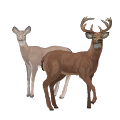
Deer
Deer seasons in Colorado are organized by firearm type, and dates may vary depending on the ‘unit’ or region in which you’re hunting. Seasons within the state include archery, muzzleloader, and rifle seasons. The deer season typically opens in September and closes at the end of December.
Learn more about hunting deer in Colorado.
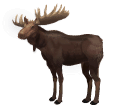
Moose
Moose seasons in Colorado are organized by firearm type and include archery, rifle, and muzzleloader seasons. Moose season in Colorado typically opens in mid-September and closes in mid-October.
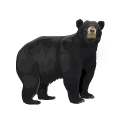
Bear
Bear seasons in Colorado are organized by firearm type, region, and land-type. The number of bear licenses available may also be limited. The bear season in Colorado typically opens in early September and closes in late November.
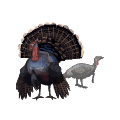
Turkey
Turkey seasons in Colorado include both fall and spring seasons, as well as a late season. Turkey license types available may be limited, or drawn, depending on the season. The fall season typically opens in early September and closes in October, while the spring season opens in April and closes in May. Late turkey season typically opens mid-December and closes mid-January.
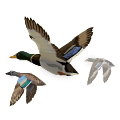
Duck
Ducks seasons are typically organized by zone and include a northeast zone, southwest zone, and mountain/foothill zone. The season for ducks and coots typically opens in early October and closes at the end of January of the following calendar year, depending on the zone.
HUNTING ON PUBLIC OR PRIVATE LAND
PRIVATE LAND
Much of the land in Colorado is privately owned. Hunters can typically freely take game animals hunted on their own private property or may seek permission from a landowner to hunt on private property. Hunters who wish to take game on privately owned land must follow state hunting regulations as well as any regulations specified by the landowner. Hunters must ensure they respect the rights and property of the landowner at all times.
PUBLIC LAND
With more than 23 million acres of public land through the state, Colorado offers an abundance of public hunting opportunities within wildlife areas, conservation areas, state parks, and forests. State-managed public lands are spaces that are designated for wildlife and habitat managed, and conservation and provide a variety of opportunities for outdoor recreation including hunting, trapping, fishing, hiking, and wildlife watching.
State-managed lands may also have specific rules and regulations in place that must be followed by all land users. Hunters should check the regulations that apply within the public hunting area they plan to visit.
For more information on the rules and regulations that apply to hunters and other recreational users of state lands, visit the Colorado Parks and Wildlife website.
STATE WILDLIFE AREAS
Hunting in Colorado’s State Wildlife Areas
State Wildlife Areas (SWAs) In Colorado are designated as public lands that are state-owned and managed by Colorado Parks and Wildlife. There are more than 300 State Wildlife Areas in the state of Colorado, encompassing millions of acres of mountainous regions, foothills, forests, grasslands, and wetlands, and other natural areas. These spaces are open to hunting and other types of outdoor recreational activities.
State Wildlife Area Regulations
Additional rules, regulations, and restrictions may apply when hunting in State Wildlife Areas or using them for other recreational purposes. Regulations will often be posted within the area and may vary depending on the Wildlife Area you’re accessing. Some of these regulations may include:
- Firearm type restrictions and take method restrictions
- Restrictions on training dogs for hunting purposes
- Restrictions on motor vehicle access
- Additional licensing or permit requirements
- Camping and other recreational use restrictions
The Centennial State. Ready and rarin’ to go.

Where to Hunt in Colorado
The state of Colorado is a world-renowned hunting destination. The state’s rugged and varied landscape and lengthy list of game animals available for hunting draw hunters from around the globe. Top hunting destinations within the state will depend on the type of game you plan to hunt.
If you’re in search of more exotic prey – try your luck at hunting bighorn sheep. If you’re lucky enough to win a license to hunt this game animal, head to the state’s west central region, towards the White River National Forest and the Frying Pan river. The terrain is rugged, but sheep populations are healthy, and success rates within this area are high.
If you prefer flightier foe, upland game bird hunting is another popular hunting opportunity in Colorado. Counties along the states northern and eastern borders are known hotspots for upland birds, including Yuma County, and Logan County. Public hunting lands in these areas include the South Republican State Wildlife Area and the North Sterling State Park.
Overall, deer and elk are the most popular species to hunt in Colorado. Both species have healthy populations throughout much of the state. For your best chances head south west to Plata County, where deer and elk populations are both high, and you’ll find the San Juan National Forest, which offers public hunting opportunities.